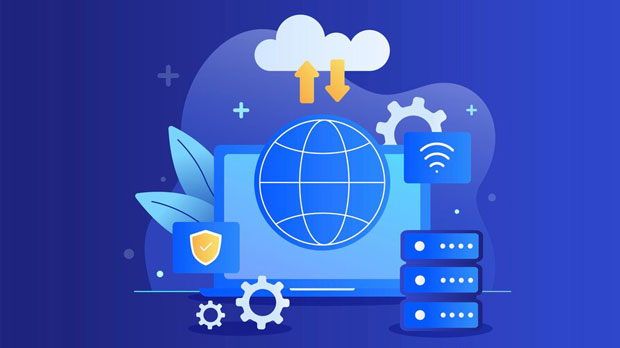Cost agility in the world of cloud computing and digital infrastructure is becoming increasingly vital for businesses. The flexibility to scale resources based on demand rather than sticking to fixed prepaid models can significantly impact a company's bottom line. This article will dive into the Return on Investment (ROI) comparison between on-demand PYPROXY proxy resource calls and prepaid models, highlighting the advantages of cost agility, scalability, and resource optimization. By analyzing both models, we will explore which approach delivers better value for businesses and offer key insights into making an informed decision based on specific needs. Understanding Cost Agility and Resource FlexibilityCost agility refers to the ability of a business to adjust its expenditures based on fluctuating demand, minimizing excess spending while ensuring that resources are available when needed. This approach contrasts with the traditional prepaid model, where companies commit to fixed costs regardless of resource usage. With cloud technologies and proxy services such as PYPROXY, businesses now have the option to adopt a more flexible model. This allows them to scale resources in real time, ensuring that they only pay for what is used.In the context of PYPROXY proxy services, on-demand calls provide businesses with the flexibility to request resources as needed without committing to upfront payments. This contrasts with the prepaid model, where businesses prepay for a set amount of resources, often leading to wasted capacity if usage does not align with the initial projections.Comparing ROI: On-Demand vs Prepaid ModelsTo assess the return on investment (ROI) for both models, we need to consider factors such as cost efficiency, scalability, resource utilization, and flexibility.1. Cost EfficiencyIn the on-demand model, businesses only pay for what they use. This eliminates the need to overestimate resource requirements and ensures that they don’t waste money on unused capacity. If a business experiences a spike in traffic or resource demands, they can quickly scale up to meet those needs, and once the demand subsides, resources can be scaled back to reduce costs.On the other hand, prepaid models often require businesses to estimate their resource needs in advance, and if actual usage falls short of projections, the business ends up paying for unused capacity. In some cases, businesses may even overestimate their requirements to avoid running out of resources, leading to unnecessary overpayment.2. Scalability and FlexibilityOne of the greatest advantages of the on-demand model is its scalability. Businesses can increase or decrease their resource allocation based on real-time needs, which is especially valuable in unpredictable environments. For example, if a website experiences sudden traffic surges due to marketing campaigns or product launches, an on-demand approach ensures that resources are automatically adjusted to meet demand.In contrast, prepaid models lack this level of agility. Once the resources are paid for, they are available for use, but the business cannot adjust them dynamically. This rigidity can be a significant disadvantage for businesses with fluctuating or uncertain demand, as they may find themselves paying for resources they don’t need.3. Resource UtilizationEffective resource utilization is crucial in maximizing ROI. With on-demand resource calls, businesses have a better chance of optimizing their resource usage since they are only paying for the exact amount of capacity needed at any given time. This prevents underutilization or overutilization, both of which can reduce ROI.Prepaid models often result in less efficient resource utilization. Since businesses commit to a fixed amount of resources, they may face situations where they have either too much or too little capacity. Over-provisioning leads to wasted expenditure, while under-provisioning can impact service quality and performance.4. Long-Term ROI ConsiderationsFrom a long-term perspective, the on-demand model tends to outperform prepaid models in ROI for businesses that experience variable demand. Since businesses can adjust their resources as needed, they are not locked into spending beyond their immediate requirements. This enables companies to allocate funds more effectively, investing in other growth areas or optimizing their overall cost structure.Prepaid models may seem attractive initially due to their predictable costs, but they can lead to inefficient spending if not carefully managed. Over time, the inability to adjust resource allocation may negatively impact a company’s cost-effectiveness, particularly for businesses that experience fluctuating usage patterns.Strategic Considerations for Choosing Between Models1. Industry Type and Resource DemandThe type of business or industry plays a significant role in determining which model is more appropriate. For businesses with highly predictable and stable resource requirements, such as those with steady traffic or internal infrastructure needs, the prepaid model may offer simplicity and cost savings. These businesses can accurately forecast their resource consumption, making prepaid options a more cost-effective choice.Conversely, industries with dynamic and fluctuating resource needs, such as e-commerce platforms, media companies, or software as a service (SaaS) providers, will benefit more from the on-demand model. These industries require more flexibility to respond to real-time changes, making the scalability of the on-demand model a better fit.2. Budget Constraints and Financial PlanningBusinesses that face strict budget constraints may prefer the prepaid model due to its predictable, upfront costs. This helps with financial planning and ensures that there are no unexpected expenses. However, companies should consider the risk of underutilizing prepaid resources, which could result in wasted capital.On the other hand, businesses with more fluid budgets and the ability to scale up and down based on usage may find the on-demand model more appealing. This flexibility allows them to better align their expenditures with actual needs, providing a more efficient allocation of resources.Conclusion: Which Model Delivers Greater ROI?In conclusion, both on-demand PYPROXY proxy resource calls and prepaid models offer distinct advantages, but the best approach depends on the business’s specific needs. The on-demand model excels in cost efficiency, scalability, and resource utilization, making it the ideal choice for companies with fluctuating demand. Meanwhile, the prepaid model may still have its place for businesses with predictable needs or those looking for budget stability.Ultimately, the decision should be based on an analysis of resource requirements, industry dynamics, and financial flexibility. Businesses should carefully evaluate both models to ensure they are making the most informed and cost-effective decision for their unique circumstances.
Jun 04, 2025






















































